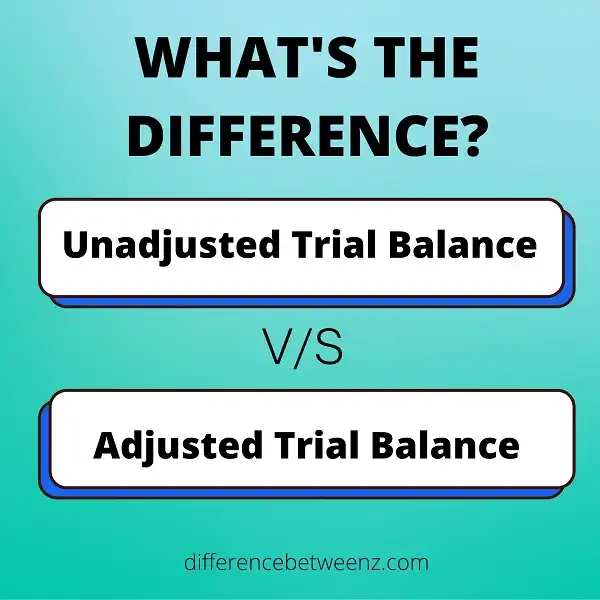A trial balance is a list of all the debit and credit balances in a company’s general ledger. The purpose of preparing a trial balance is to determine if the total of the debit balances equals the total of the credit balances. This article will explain the difference between unadjusted and adjusted trial balances.
The unadjusted trial balance is what we start with – it’s simply the balances from the general ledger as originally recorded. To prepare an adjusted trial balance, we make certain adjustments to account for things like adjusting entries, depreciation, and accruals. These adjustments are necessary to give us a more accurate picture of a company’s financial position.
What is Unadjusted Trial Balance?
An Unadjusted Trial Balance is a list of all the accounts in the ledger with their debit and credit balances. This is usually done at the end of an accounting period before the financial statements are prepared. The Unadjusted Trial Balance provides a way to check the arithmetical accuracy of the ledger and to verify that all transactions have been recorded. It also helps to identify any accounts that need to be adjusted before the preparation of the financial statements.
What is Adjusted Trial Balance?
Adjusted Trial Balance is a report which comprises the end balances of all the ledger accounts after the adjusting entries are made. It is a step towards the preparation of financial statements. The Adjusted Trial Balance is prepared after the adjusting entries are journalized and posted to the ledger accounts. The Adjusted Trial Balance comprises three sections, they are:
1) Assets
2) Liabilities
3) Stockholders’ Equity
Adjusted Trial Balance lists down all the ledger account balances as of the end of the accounting period after all the necessary adjustments have been made. This report is very helpful for external users like creditors, investors, etc., to get an idea about a company’s financial position. Adjusted Trial Balance ensures that the Debit side balance is equal to the Credit side balance and hence it helps in locating any error that might have occurred during recording or posting transactions.
Difference between Unadjusted and Adjusted Trial Balance
An unadjusted trial balance is a list of all the ledger account balances before adjusting entries are made. It includes temporary accounts that are not closed at the end of the accounting period. Adjusted trial balance is a list of ledger account balances after adjusting entries are made. It does not include temporary accounts. Adjusting entries are made to correct errors and omissions and to record accruals and deferrals. An unadjusted trial balance is prepared first. Then, adjusting entries are made and posted to ledgers. Finally, an adjusted trial balance is prepared.
Conclusion
The unadjusted trial balance is the first step in the accounting process. It is a list of all the accounts and their balances as of the end of the accounting period. The adjusted trial balance is the second step in the accounting process. It is a list of all the accounts and their balances after adjusting for transactions that occurred during the accounting period.


